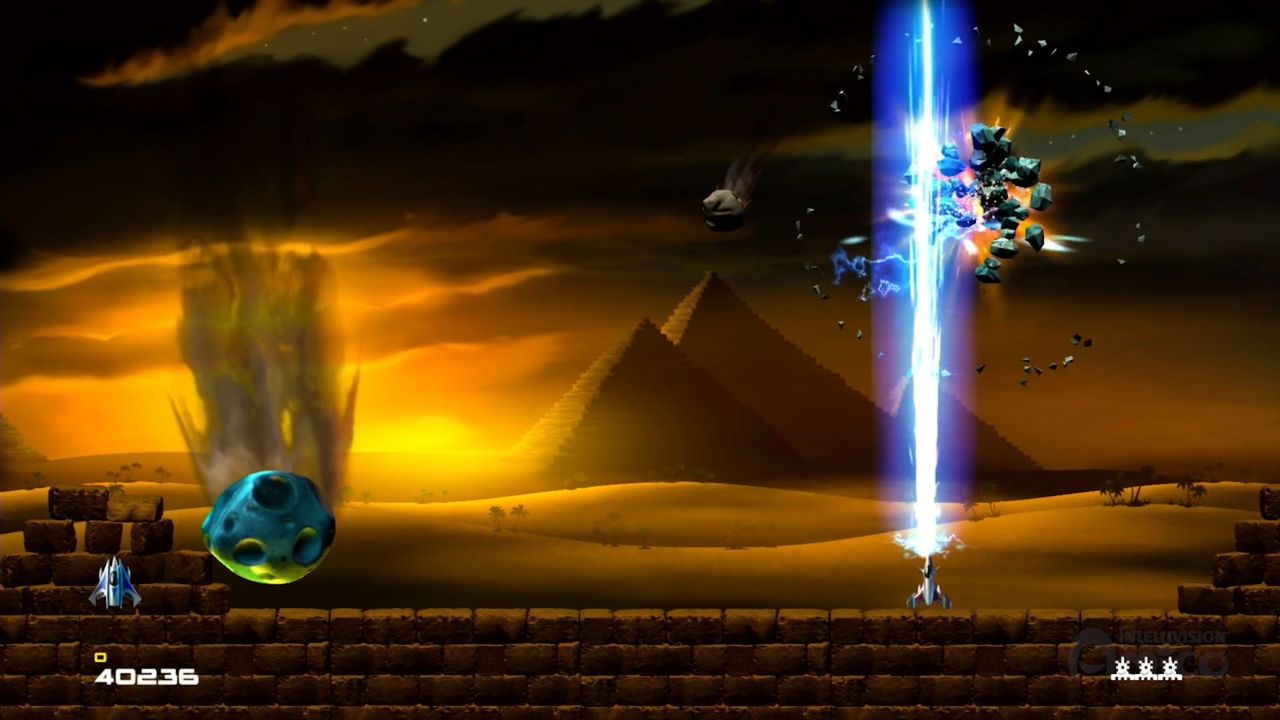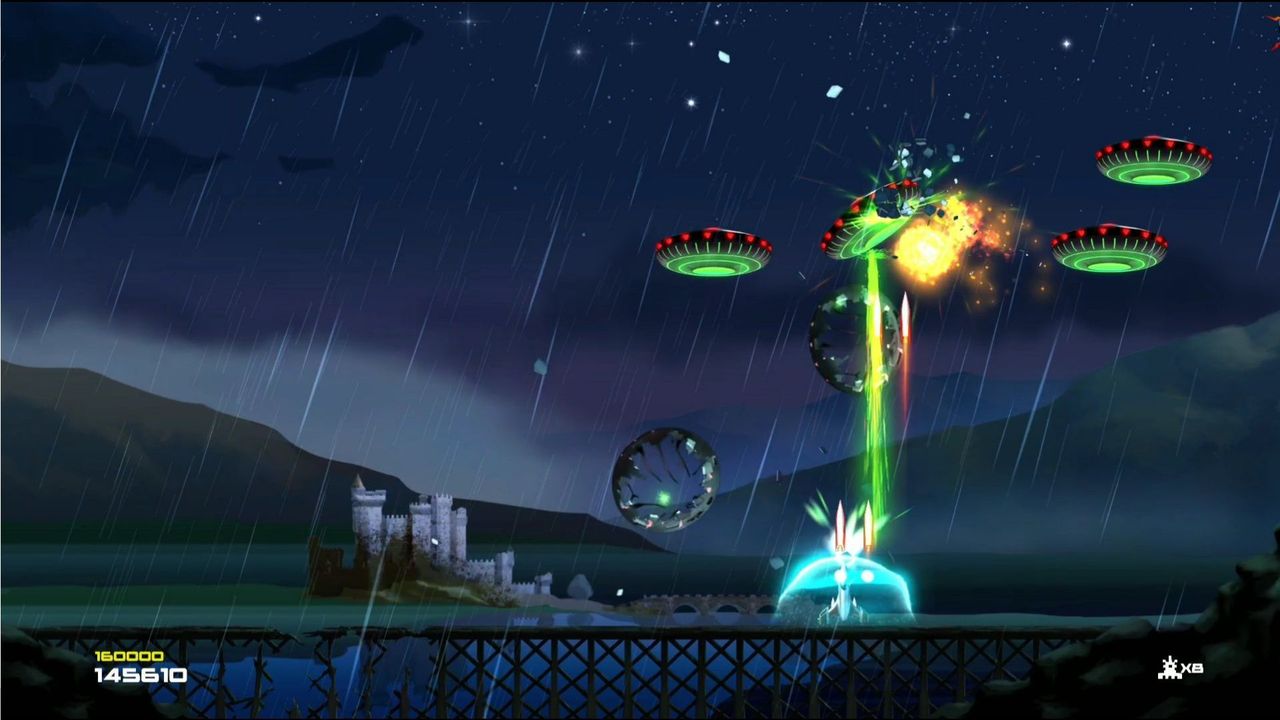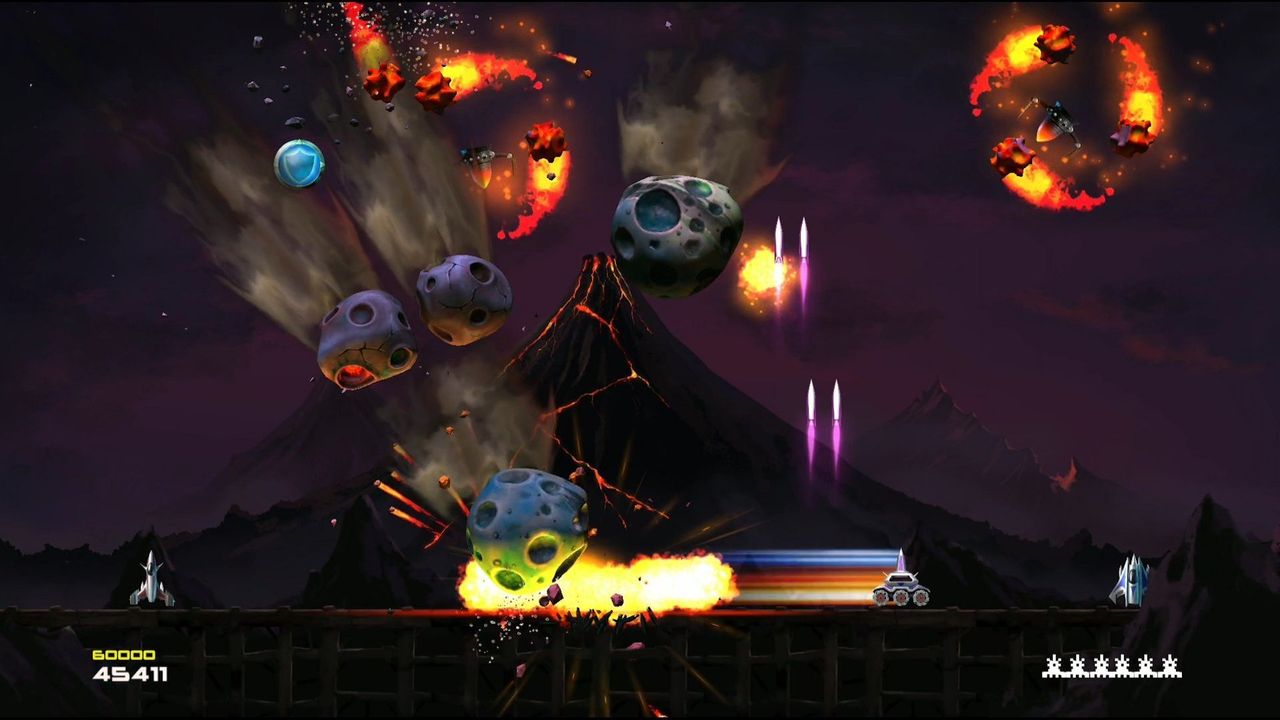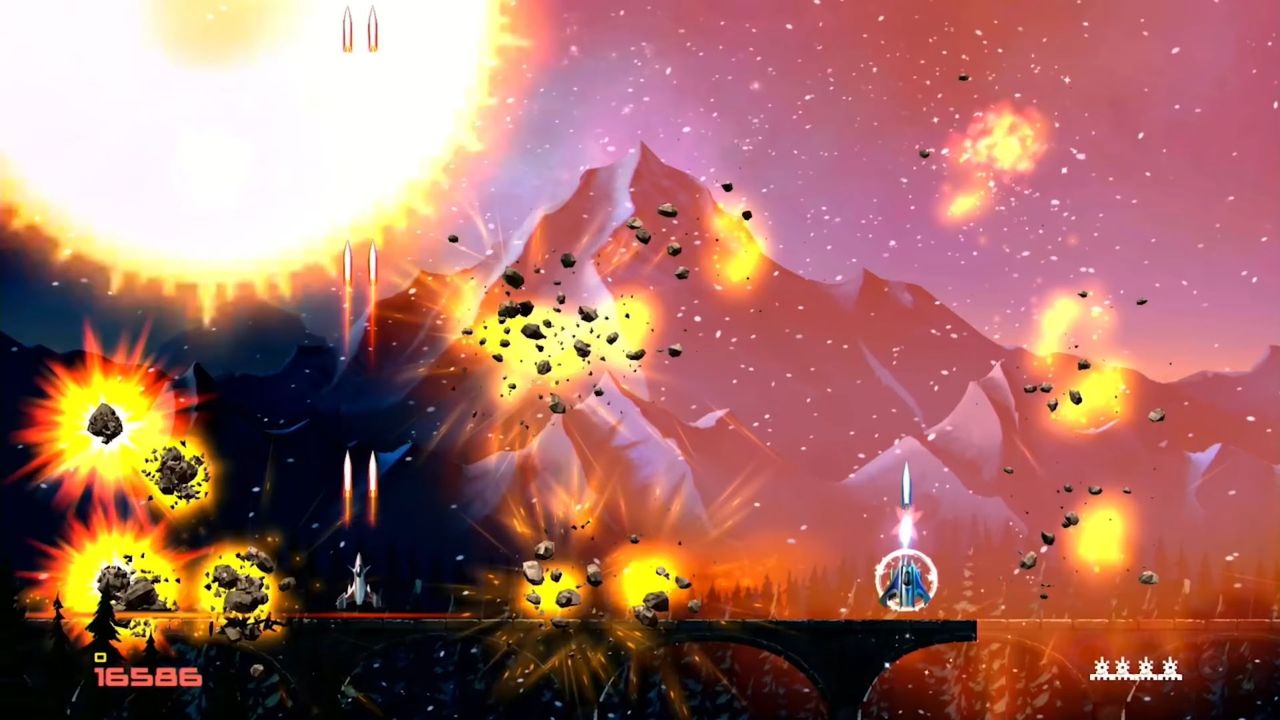Review: Astrosmash (Nintendo Switch) – Pure Nintendo

Astrosmash was originally developed for the Intellivision system in 1981, and where it sold over 1,000,000 copies. One of those copies belonged to my family, but it was never a favorite of mine. The Intellivision had much better space games, such as Star Strike and Space Battle. And if you were just looking for a Space Invaders clone, Space Armada was a more accurate knock-off.
Perhaps because of the game’s original popularity and somewhat recent pop-culture boost from The Big Bang Theory and The Flash TV shows, an update of Astrosmash was developed for inclusion on the Intellivision Amico. It’s looking like that system will never see the light of day, but the game has; developer BBG Entertainment has released it for Nintendo Switch, and it’s solid…depending upon what you want from a retro fix.
Like most early ’80s console games (especially those developed to emulate the arcade experience), there’s not much of a premise here. Objects are falling from the sky. You shoot them. Think too far beyond that, and unnecessary questions arise. Why are they all falling in a flat, 2D plane? Who took the time to build a track directly under their line of descent? And why bother blowing them up when the only thing the falling objects can damage is said railroad track?
Astrosmash allows you to select the style of gunner, but it’s purely cosmetic; all ships have the same abilities once the objects start falling. You can fire straight up, and you can quickly dash to either side to escape low targets. There are some bonuses dropping amongst the debris, and these become key components of your survival: shields, double attacks, high-power lasers, and even a bomb that clears out the entire screen when it’s hit.
As in the original version, there’s some diversity in the objects you’re destroying. They fall along different paths, behave differently when shot, attack in waves, etc. Eventually, the rocks advance to bombs and UFOs that are smarter and require more work to clear out. There’s even an occasional boss that requires plenty of hits before it’s destroyed. After taking out enough of these objects, it’s on to the next level.
This doesn’t sound like much, I know, especially considering there are only ten levels. On my first playthrough, I made it through seven of them. But I’ll be damned if BBG didn’t nail nearly every aspect of this update.
First of all, the graphics are fantastic. The game not only looks great, but it also plays at a higher frame rate than we’re used to seeing on the Switch. Even better, the game doesn’t stutter, even when at its most chaotic. The backgrounds are not only attractive, they also occasionally play into the level. When the volcano erupts on level three, you can quickly expect an onslaught of flaming boulders. A lot of care has obviously gone into Astrosmash’s presentation.
The audio is equally impressive, and I especially liked the music. Although it does occasionally ramp up with the action, it mostly has a chill vibe that often takes its tone from the level’s setting. My son described the effect nicely, saying he finds it relaxing when a game plays calm music beneath heavy action. I agree. The gameplay becomes intense without becoming stressful.
The multiplayer is fun, mainly because anyone can hop it and be good from the start. How hard is it to slide left and right and fire up, especially when you can engage auto-fire? Online multiplayer is available, but even with cross-platform support, I never found anyone to play with. As such, local multiplayer will be the way to go.
What I like best, however, is the pacing. The original Astrosmash had such a slow build-up that, after a few days, you would have to play it for half an hour before it became challenging. Not long after that, you could get new ships so quickly that you couldn’t die fast enough to run out. The game could go on forever if you didn’t quit it to go watch Spectreman. On the Switch, Astrosmash still lets you get through a few levels before any degree of difficulty kicks in, but it gets hard pretty quickly. I mentioned I got to level seven in my first session, but it took quite a few more before I was able to reach level ten.
My hot take is that I’m happy there are no saves. You can’t stop at some point and pick it up later. You can’t continue from your current location when you run out of lives. You play until you die or have to quit. Like on the Intellivision. Of course, you can always just put the Switch to sleep and pick it up later, if necessary. Also like on the Intellivision.
I do have to say, however, that—as with Shark! Shark!, which was also being developed by BBG for the Amico—Astrosmash could benefit from including the original Intellivision version of the game. My appreciation of this release comes from being an Intellivision fanboy. Assuming that’s the target audience, including that version would’ve boosted box office receipts.
That request aside, BBG’s Astrosmash entertained me more than I expected, and certainly more than the original game did. This is a well designed, expertly executed take on a 40-year-old game that provides a few modern updates without sacrificing the spirit of the original. Those who haven’t played the 1981 version likely won’t get the low-stakes appeal, especially at the $15 asking pric). But if you’ve got a few Arcade Archive titles in your Switch library, wait for a sale, and Astrosmash should then sit comfortably amongst them.







